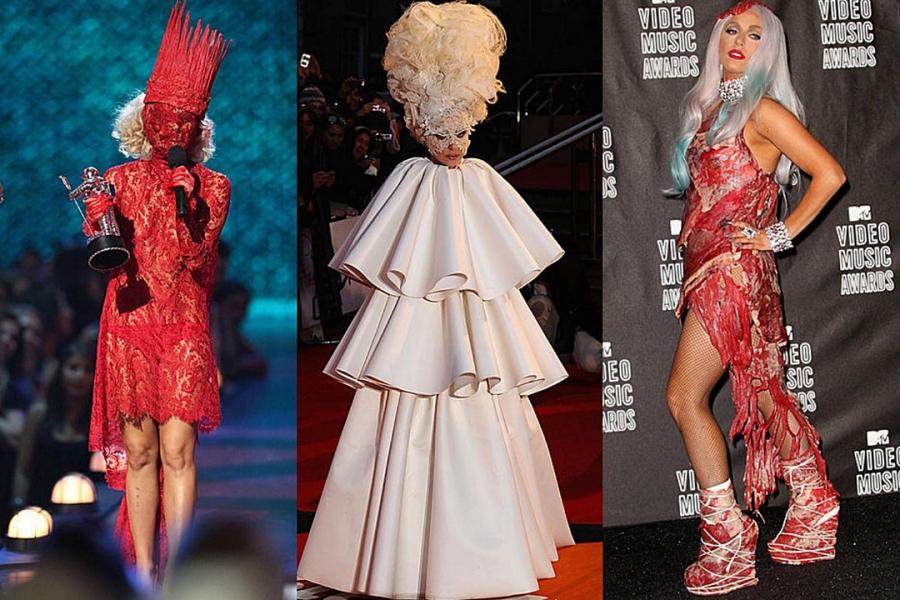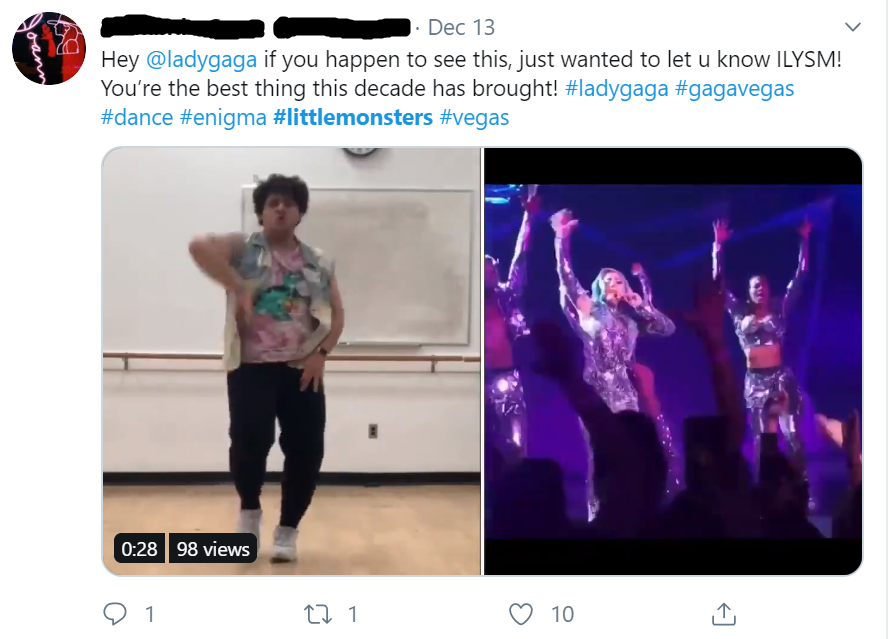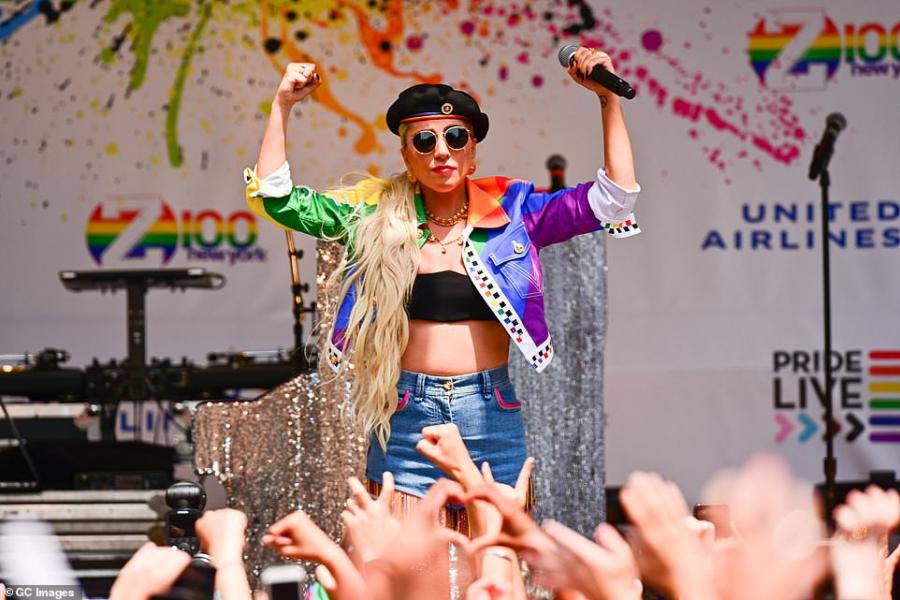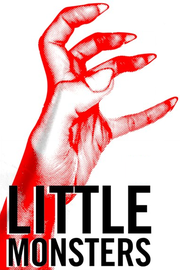
Little Monsters: The fans behind Lady Gaga
Lady Gaga has a very big distinct fanbase, which can be understood as a social group. This article will introduce Gaga's fans, known as "Little Monsters", and examine how they function as a group in today’s society.
Mother Monster and her Little Monsters
Let's start with the "Mother Monster": Stefani Germanotta, mostly known as Lady Gaga, is a famous American pop artist and icon. Her worldwide success started in 2009 when she launched her first album The Fame (Biography Editors, 2018). Gaga is mostly known for her unconventionality, her provocative work and her extreme outfits and looks (see Figure 1). Over the years, she has sold millions of albums, and has garnered countless awards as well as billions of YouTube views.

Figure 1. Lady Gaga's extreme looks
As part of her career as an artist, Gaga also actively supports LGBTQ (lesbian, gay, bisexual, transgender and queer) rights worldwide. She speaks at various events in support of LGBTQ rights and writes songs about loving yourself regardless your race, gender or sexual orientation. In 2011, Gaga launched the Born This Way Foundation, a non-profit organisation that aims to inspire young people to build better and safer spaces within local communities.
While Lady Gaga was working on her second album, The Fame Monster, she developed the "monster" theme. It refers to her inner fears, the "monster" of alcohol, drugs and death. In 2009, Gaga started to use the name during her live performances to refer to her fans. From that moment on, the term "Little Monsters" has been used to describe any Lady Gaga fan. Gaga was the first Western artist who gave a whole fandom a nickname. This practice was already common in the K-pop industry but not in Western society. By giving her fans a specific name, Gaga created an “us” and a “them”. You either were a true Lady Gaga fan or you weren’t. True Gaga fans from all over the world proceeded to group up online on social media and in support networks (Hall, 2017).
Transnationalism and superdiversity
Lady Gaga's fanbase is huge and her fans are found all over the world. On social media platforms, Gaga has millions of followers. On Twitter only, she has 80.7 million followers. On Instagram, she has some 39 million and on Facebook her followers reach 56.1 million. Meanwhile, Gaga's albums are (mostly) sold in America, Europe and Asia (MJD, 2019). The "Little Monsters" social group can therefore be described as transnational because the fandom goes beyond national borders. The Little Monsters are also a superdiverse group, which refers to the enormous diversification of diversity found in society today in terms of nationality, gender, education, religion, language and so on.
On a relevant note, superdiversity also refers to the role of new media and communication technologies (like the internet) in super-diversifying the world (Maly & Varis, 2016). In fact, the Little Monsters are mostly active on an online basis. They communicate with each other through social media platforms, such as public and private Facebook groups that count thousands of members. In these Facebook groups, fans share pictures, videos or news items pertaining to Lady Gaga.
Further, the ways in which celebrities use social media nowadays heighten the sense of intimacy fans can enjoy and offer greater possibilities for interaction (Marwick & boyd, 2011). Fans expect celebrities to interact with them and therefore celebrities, in this case, Gaga maintains the relationship between her and her fans by sharing personal information and communicating with them. For example, a fan can tweet @ladygaga and there is a possibility that she might even respond. In Figure 3, we see a fan who is trying to reach out to his idol by tagging her name in the hope of receiving a response from her.

Figure 3. Fans are using Twitter to reach their idol
Little Monsters also communicate through the websites gagadaily.com and littlemonsters.com. Lady Gaga has created the social network (website/app) called littlemonsters.com for her own fanbase. On this platform, fans chat with each other and upload pictures, videos and memes of Lady Gaga. Fans also have the opportunity to meet each other in an offline context, for example, at Lady Gaga’s concerts and at several events linked to the LGBTQ community where she often gives speeches.
So another salient aspect of Gaga’s fanbase, is the connection to the LGBTQ community. Lady Gaga has always been an outspoken defender of LGBTQ rights. In a recent survey conducted by BuzzFeed News and Whitman Insight Strategies in 2019, 53% of LGBTQ Americans considered Lady Gaga a gay icon (Tenbarge, 2019). Gaga inspires many people who are struggling with their sexuality, which in some countries is still not accepted. Gaga’s message is that we should accept ourselves and others just the way they are. It doesn’t matter what skin color, beliefs or sexual orientation someone has.
Lady Gaga is also personally involved in making statements about social issues such as bullying, sexual assault and mental health issues. She speaks openly about her own struggles, her mental health issues and traumas. "Lady gaga fans have a lot in common. Most of them come from the LGBTQ community, because of her views and she really fights for them" (Deborah Brough, Facebook Messenger interview, 2019).
Little Monsters as a social group
All social groups make social rules. Someone is part of a group if their behaviour conforms to the relevant rules and is judged by peers as conforming to these rules. A study on the identification of Lady Gaga's fans conducted by by Click, Lee and Holladay (2013) shows that there is a distinction to be made between Lady Gaga fans.
Little Monsters believe they are more engaged than lesser-invested Lady Gaga fans. For example, many respondents who took part in the study insisted that Lady Gaga fans are primarily interested in Gaga’s music, while Little Monsters explore all aspects of Lady Gaga’s persona (Click, Lee & Holladay, 2013).
After reading this study, wondering if other Little Monsters still think this way, I asked for the opinion of the person who created the Facebook group Lady GaGa - True Little Monsters. "Anyone can be considered a true Little Monster if they respect everyone, have a love and passion for Lady Gaga and appreciate what messages she brings as well as her talent", she said. "It's not about how long you've loved her, it's your understanding of her and what she brings to this world that makes someone a true Little Monster" (Deborah Brough, Facebook Messenger interview, 2019).
For Deborah, there is no clear distinction to be made among Lady Gaga fans. Simply the fact that the person has a passion for Lady Gaga and appreciates and understands her message to the world suffices for them to be a Little Monster. Deborah's personal intention when creating this Facebook group was to meet people from all over the world who also enjoyed Lady Gaga’s music and talent: to share the common interest with others and to make friends. She believes that everyone can be a member of this Facebook group, nobody who wants to be a member has to "prove" that he or she is a true Lady Gaga fan in a particular way.
Social rules, norms and symbols
The Gaga fan community is considered as a social group with specific social rules and norms. The social group is passionate about everything Lady Gaga does and they all share the same ideology regarding the LGBTQ community. For this reason, the Little Monsters community do not extremely deviate significantly from the mainstream as more and more people support the LGBTQ community nowadays and an increasing number of countries allow gay marriage.

Figure 4. Lady Gaga gives a speech at Stonewall Rally in 2019
Another fan I interviewed on Facebook explicitly formulated rules and norms of the Little Monsters: “The clear rules and social norms of Lady Gaga fans is we love and respect each other regardless of who we are and where we come from. She is all about spreading love especially in the LGBTQ community’s where there is still a huge number of obstacles to overcome” (Yasmin Rogers, Facebook Messenger interview, 2019).
So, another important rule within this community is that everyone should respect each other. This rule arises from Lady Gaga’s perspective on the world, which is to appreciate each other without judging them.
The Little Monsters have both a name, an ideology and a universal symbol to unite them.
Seen from another perspective, today's society consists of many distinct groups and niched transnational cultures. The same applies for fandoms. Many artists have a fanbase with its own rules and norms, made up by people who communicate online. For this reason, Little Monsters can be seen as outsiders because they deviate from other fandoms. According to Becker (1963), a social group has norms that members have to accept, but these are not particular, written rules. Instead, there are social standards and norms that need to be accepted. Within this particular social group, the relevant rules and social norms pertain to respecting each other and loving yourself.

Figure 5. Little Monsters symbol
Furthermore, the social group created a universal symbol. The symbol of the Little Monsters (Figure 5) is a hand making a claw-like gesture. The same gesture is found in the music video for Gaga's song "Bad Romance". The symbol was created when Gaga saw a fan in Boston greet another fan with the claw hand; from that moment on, Gaga knew that the claw hand should be the Little Monsters symbol. The gesture is now known as "Monster Claw" or "Monster Paw" (Gagapedia, n.d.). Lady Gaga and her Little Monsters use the phrase “Monsterpaws Up” or “Paws Up” to greet each other or to show agreement. Fans also show their Paws when they are inspired by Gaga’s music, art and fashion. Lady Gaga also refers to this symbol in her music. For instance, in the song "Born This Way", she sings: "Just put your paws up 'cause you were born this way, baby". Eventually, Gaga got the claw symbol tattooed on her back, which she later shared on her Instagram. This was seen as a gift Gaga gave back to her fandom.
Little Monsters united
To conclude, Lady Gaga's fans, the so-called “Little Monsters”, comprise a social group made up of people love Lady Gaga’s music, art, fashion and personality. They communicate mostly online, on social media and websites. Gaga's enormous fanbase goes beyond national borders and is therefore transnational and superdiverse. The fanbase is also connected to the LGBTQ community because Gaga actively supports those who are struggling with their gender or sexuality.
Moreover, there are distinct rules and norms to be followed within this community. Everyone loves Lady Gaga and her view of the world that promotes a message of appreciating each other and loving yourself. Therefore, one of the rules of the community is that everyone should respect each other regardless their gender, sexual orientation and race. In the end, the Little Monsters have both a name, an ideology and a universal symbol to unite them.
References
Becker, H.S. (1963). Outsiders: Studies in the sociology of deviance. New York: The Free Press.
Biography Editors. (2018, January 25). Lady Gaga Biography. Retrieved November 22th, 2019.
Brough, Deborah. Interview through Facebook Messenger. 2019.
Click, M., Lee, H., Holladay, H. (2013). Making monsters: Lady Gaga, fan identification, and social media. Popular Music and Society, 36(3), 360-379. doi:10.1080/03007766.2013.798546
Gagapedia. (n.d.). Little Monsters (fanbase). Retrieved November 26th, 2019.
Hall, J. (2017, September 30). Lady Gaga Pioneered Online Fandom Culture As We Know It. Retrieved November 25th, 2019.
Maly, I., & Varis, P. (2016). The 21st-century hipster: On micro-populations in times of superdiversity. European Journal of Cultural Studies, 19(6), 637–653. https://doi.org/10.1177/1367549415597920.
Marwick, A. & Boyd, D. (2011). To see and be seen: Celebrity practice on Twitter. Convergence: The International Journal of Research into New Media Technologies, 17(2), 139–58. doi: 10.1177/1354856510394539
MJD. (2019, August 20). Lady Gaga albums and songs. Retrieved November 26th, 2019.
Rogers, Yasmin. Interview through Facebook Messenger. 2019.
Tenbarge, K. (2019, June 29). Lady Gaga's Stonewall speech touched on bisexual exclusion. Retrieved November 25th, 2019.
Varis, P. (2014). Digital ethnography. Tilburg Papers in Culture Studies, 104.